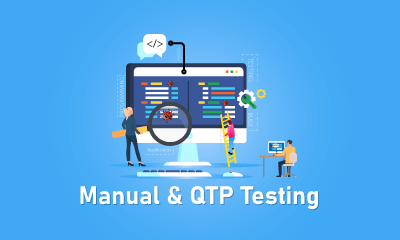Apache JMeter and HP LoadRunner are two of the most widely used performance testing products on the market today. Both of these programs are fantastic at discovering flaws and identifying common performance issues in your load-tested applications and software. Micro Focus LoadRunner is well-known for being funded by a major corporation, but ApacheJmeter is open-source or free and claims to deliver more.
This JMeter vs LoadRunner comparison blog will help you determine which best suits your needs. Topics covered in this blog are given below for your easy navigation:
What is JMeter?
One of the most popular performance testing tools for developers is Apache Jmeter. It is provided in an open-source format, making it highly accessible to software companies of all sizes. The performance testing tool also tests the functional performance of online applications and supports a 100% Java-programmed desktop application.
HTTP, HTTPS, FTP, LDAP, SOAP, and TCP are just a few of the web and networking protocols that the tool supports. Because the program is built on a Java platform, it supports JDBC and Message-Oriented Middleware (MOM) via JMS.
Jmeter is also compatible with email protocols, including IMAP(Server), POP3(Server), and SMTP(Server) (Server). These protocols assist you in reinforcing security standards in your application's email transfer. It is easy to implement during testing procedures by employing shell scripts and native commands.
| If you want to enrich your career and become a professional in JMeter, then enroll in "JMeter Online Training". This course will help you to achieve excellence in this domain. |
JMeter Features in Performance and Load Testing
The following are the main features of Apache Jmeter:
- GUI Design and Interface
- Result Analysis and Caches
- Highly Extensible Core
- 100% Java scripted
- Pluggable Samplers
- Multithreading Framework
- Data Analysis and Visualization
- Dynamic Input
- Compatible with HTTP, HTTPS, SOAP / REST, FTP, Database via JDBC, LDAP, Message-oriented middleware (MOM), POP3, IMAP, and SMTP
- Scriptable Samplers (JSR223-compatible languages, BSF-compatible languages, and BeanShell)
When Do We Need to Employ JMeter?
Web apps are well-designed and well-developed on a global scale. Users only choose software apps that provide better results from the many options available. As a result, to stay ahead of the competition, your software must be optimized for improved speed. For web app testing, JMeter is a great tool. It offers consumers a variety of performance testing and integration capabilities. As a result, you may evaluate the functional capabilities of web apps and services and load strength and platform compatibility.
In addition, QA engineers can transfer test tools across many browsers and servers. At the same time, Apache JMeter has robust features to execute customized tests on protocols such as HTTP and HTTPS for the web, POP3, SOAP, SMTP, and JMS. As a result, you can rest assured that your web applications will run smoothly and efficiently.
Meanwhile, because the tool is based on an open-source foundation, users can easily tweak and build features inside it. This property also gives software development teams the freedom to create structural testing designs and web app architecture. The open-source platform also aids software developers in establishing a large user base.
| Related Article: Jmeter Tutorial |
Pros and Cons of JMeter
Advantages
- JMeter is simple to install and use on any Windows, Mac OS X, or Linux desktop computer.
- It features the most user-friendly interface and can be easily used in a command-line interface.
- JMeter can simply import data from any data format, including HTML, JSON, XML, and text-based formats.
- JMeter has visualization and data analysis plugins that are ready to use.
- It allows native programs and browsers to record tests.
- JMeter can be readily integrated with third-party tools and plug-ins.
- It's highly adaptable and portable.
- JMeter offers a good support community and has an unlimited load generation capacity.
Disadvantages
- Because the technology is challenging to use, it necessitates professional testing analysts.
- It doesn't support JavaScript and, as a result, doesn't accept AJAX requests by default, making it difficult to run Java code through the system.
- Using JMeter to test complicated applications like CSRF or JS to change requests.
- JMeter utilizes too much RAM in GUI mode, resulting in many errors being displayed to users.
- It performs less well than other paid testing products on the market.
| Related Article: Jmeter Interview Questions |
What is LoadRunner?
HP Loadrunner (formerly Micro-Focus Loadrunner) is a sophisticated software performance testing tool for web applications that discovers and prevents performance issues. It specializes in learning bottlenecks in applications before they are implemented or deployed. Similarly, before implementing or upgrading a new system, the tool is handy in spotting performance gaps.
Loadrunner, on the other hand, isn't just for testing online apps and services. The software can also evaluate ERP applications, legacy systems, and Web 2.0 technologies. Loadrunner gives software testers total access to the performance of their approach from start to finish. As a result, these users can test each component before going online. The technology behemoth Hewlett Packard owns Loadrunner, which is not open source. As a result, users are unable to access the application's code.
LoadRunner Features in Performance and Load Testing
The following are some of the essential characteristics of HP Loadrunner:
- Interactive User Transaction Simulation
- Supports a Wide Range of Apps
- Mobile Testing
- Cloud Testing
- Continuous Testing
- Root Cause Analytics
- Accurate Scalability Expense Prediction
- Refined user interface
- Enables users to test a variety of applications including mobile, .NET, Java, SOAP, Flex, HTML 5, ERP, legacy, GWT, Silverlight, Ajax, and Citrix
| Related Article: JMeter Correlation |
When Do We Need to Employ a LoadRunner?
LoadRunner is unique because it provides users with an accurate and complete picture of an app's E2E (end-to-end) performance. As a result, users may quickly discover and resolve performance issues. The performance testing tool can simulate thousands of users at once. As a result, your QA team will be able to act real-world user loads on your app and prepare it for deployment.
Following data collection, the app analyses the information in-depth and provides valuable insight into why the app is acting in a certain way. As a result, users can quickly figure out what's causing the app to malfunction. On the other hand, LoadRunner is incredibly adaptable and supports a wide range of programs. As a result, software developers can test various programs, including.NET, mobile, Java, Flex, SOAP, ERP, HTML 5, legacy, Silverlight, GWT, Citrix, and Ajax.
You can run comprehensive, rapid, and realistic load tests from many geographic locations because of LoadRunner's user attributes for cloud-based tests. With the help of the cloud, you may also alter the website load and mimic the requirements of business programs.
Pros and Cons of LoadRunner
Advantages
Here are a few of the more significant advantages.
- The system, end-user, and code-level bottlenecks are accurately identified.
- LoadRunner determines the source of app performance issues.
- It reduces the expense of application downtime caused by performance problems.
- Allows new technologies to be used to test the performance of existing legacy applications.
- Testers can now test mobile applications.
- By anticipating software capacity and scalability, it is possible to reduce software and hardware expenses.
- Allows software teams to create intelligent service-level agreements before their product is live, allowing for faster application delivery.
- Allows you to keep track of how well your tools are being used.
- Access to global test materials using a web browser
- The most efficient use of the load generator farm
Disadvantages
Considering its excellent features and numerous advantages, HP Loadrunner has a few flaws:
- The ability to debug must be improved.
- Quite costly.
- It consumes a lot of memory and will crash if the system's compute requirements are not met.
- You may run across problems.
- Dump analysis and subsequent results forwarding should be improved.
- The number of virtual users determines the licensing type.
- A limited capability for lead generation
| Related Article: Performance Testing Training |
Key Comparison Between JMeter vs. LoadRunner
Micro Focus LoadRunner has a strong market position, and JMeter is gaining ground faster than any other performance testing tool available today. Compare the following parameters to choose between these two excellent performance testing tools:
- User-friendliness
JMeter is a set of free and open-source software testing tools that may be downloaded and used to run any test. On the other hand, Micro Focus LoadRunner is an expensive software testing tool. It has recently offered free trial editions, although these are difficult to obtain. - Capacity to generate loads
The capacity to create loads using Apache JMeter is endless. On the other hand, Micro Focus LoadRunner has limited load creation capabilities. - Implementation
In Apache JMeter, the implementation is a lot easier. All you have to do now is install Java, download Apache JMeter, and upload the JMeter script file. However, when compared to Apache JMeter, execution is more complicated. It creates a separate thread for each customer. - Conclusions of the Investigation
For less trained and experienced engineers, analysis reports are straightforward to grasp, and for QA testers with more understanding, they enable extensive analysis. The data is in a raw format that HP Scrutiny parses to generate several graphs. - Creating Test Scenarios
Starting and ending transaction components are not required with Apache JMeter. LoadRunner is difficult to use since it necessitates the management of multiple agents. - Support from the Community
Apache JMeter has a thriving community that helps users with difficulties and issues. Another tool, on the other hand, is owned by a large corporation, limiting the number of users. - Scripting
With Apache JMeter, you can perform complete load testing without learning a single line of code. Micro Focus LoadRunner, on the other hand, necessitates scripting expertise. - Elements
Adding items to Apache JMeter is more accessible than with Micro Focus LoadRunner. In Micro Focus LoadRunner, configuring every element is complex. - Technically
Apache JMeter is less capable of technological capabilities, but Micro Focus LoadRunner is more advanced and developed.
| Explore JMeter Sample Resumes! Download & Edit, Get Noticed by Top Employers! |
Final Thoughts
Both tools are excellent in the end, but there are various factors to consider while selecting one. These were a few of the JMeter vs. LoadRunner comparative parameters. This concludes our JMeter vs. LoadRunner comparison blog. We hope you found this post to be informative and valuable.
 On-Job Support Service
On-Job Support Service
Online Work Support for your on-job roles.

Our work-support plans provide precise options as per your project tasks. Whether you are a newbie or an experienced professional seeking assistance in completing project tasks, we are here with the following plans to meet your custom needs:
- Pay Per Hour
- Pay Per Week
- Monthly
| Name | Dates | |
|---|---|---|
| JMeter Training | Jan 13 to Jan 28 | View Details |
| JMeter Training | Jan 17 to Feb 01 | View Details |
| JMeter Training | Jan 20 to Feb 04 | View Details |
| JMeter Training | Jan 24 to Feb 08 | View Details |

Usha Sri Mendi is a Senior Content writer with more than three years of experience in writing for Mindmajix on various IT platforms such as Tableau, Linux, and Cloud Computing. She spends her precious time on researching various technologies, and startups. Reach out to her via LinkedIn and Twitter.
















